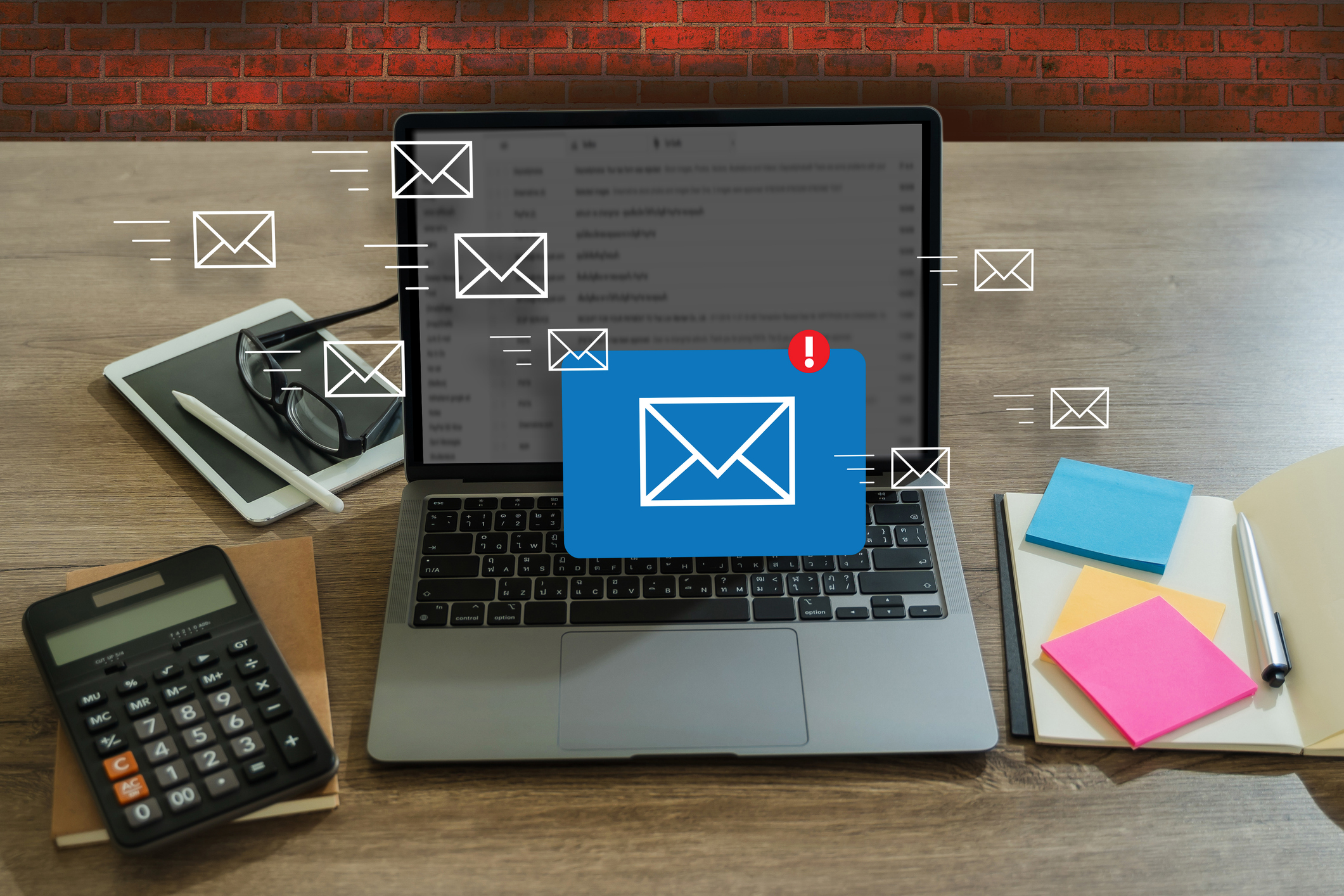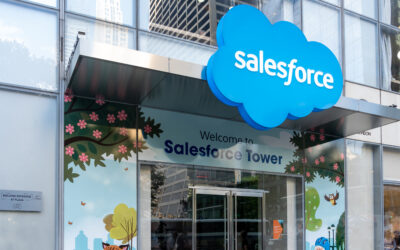Written By:
Josh Maio | Digital Marketing Designer
Even in the age of social media mavens and influencers, when it comes to business marketing, email still rules the realm, especially in the B2B sector.
You have your standard Welcome, Promotional, Transactional, Newsletter, Social-Connect, Retention, Abandoned Cart, Re-engagement campaigns, and your evergreen, one-off, and drip campaigns.
With all of these possible touch points, your primary digital marketing goal is to get these emails into the client or customer’s inbox, which may be easier said than done.
According to Litmus analytics on email delivery, roughly 16% of emails never reach the recipient’s inbox, instead landing in the spam folder.
What can you do to ensure that your marketing team’s hard work building campaigns, designing, and writing the copy for these communications is not done in vain?
In this article, we’ll discuss Salesforce’s Marketing Cloud Account Engagement, formerly known as Salesforce Pardot, and what this powerful email marketing tool can do to give businesses the best opportunity of landing in customers’ inboxes.
Improve Email Deliverability and Metrics with Salesforce Pardot
Improve metrics like sender score and deliverability rate, and steer clear of pesky spam filters with this memorable acronym, P-A-R-D-O-T, which hits the main points Pardot users need to be mindful of regarding email marketing.
P is for PERSONALIZATION
When creating a Pardot email with efficacy, Pardot users should be sure there is a level of personalization that makes the reader feel “seen.”
Consider creating your email content like you’re filling out digital Mad Libs. You speak directly to recipients through merge fields, images, and text. It’s not just putting their name in the greeting or subject line, but using your crm data to open a dialogue and show them that you are paying attention and listening. It is relationship building.
You should also consider you, the sender, when it comes to personalization. You don’t want the email sender to be from info@, marketing@, etc., as this creates distance from your audience. When it isn’t personal, the reader dissociates, and the likelihood for them to hit “unsubscribe” increases.
A is for AUDIENCE
Understanding who your audience is and how they want to engage with you is critical. This is where your database and email list come into play.
Marketers should continually make efforts to get to know their audience— their habits, their likes, and dislikes, etc.— so they can craft messaging that resonates with who they are speaking to and find ways of engaging their list to avoid an escalating bounce rate.
Think of each name in your lead list as an intricate color-by-number, and with each new piece of information, you create a more accurate image of them. The more color and detail you can compile, the better you can market to and engage each lead.
Review your lists every quarter, six months, and year, and remove unengaged subscribers. You can always find new ways for them to re-engage down the line, but you want to keep those lists tight and tidy.
Consider leveraging a double opt-in process to verify that the audience you are reaching out to is really interested in hearing what you have to say. High unsubscribe rates and other negative metrics can adversely impact deliverability. Taking proactive steps to avoid accidentally reaching the wrong audience can help mitigate that risk.
It’s easy to get the wrong email information— think typos, sloppy handwriting, etc.— The last thing you want is for someone to click “spam” on one of your emails because it hit their inbox in error in the first place and affected your sender reputation.
If this all sounds mind-numbing, consider leveraging a list hygiene service, like Kickbox, which scans lists and weeds out typos and other faulty email addresses.
Ultimately, each action you take in maintaining your list and keeping an active and engaged audience should serve the dual purpose of stopping unsubscribes, bounces, and spam complaints before they happen.
R is for RELEVANT
The world we live in does not slow down for anyone, and with social media and the speed of the current news cycle, maintaining relevance is one of the most difficult things to do— BUT it is a keystone of any company’s email marketing strategy.
The objective of relevance is two-fold here.
Keep your data and lists current and clean. Creating segmentation lists with clearly defined audiences to address them by their particular vertical, interests, or relationship to your business is paramount in keeping them engaged.
Set an email cadence that keeps your message in mind but does not overwhelm. A nice 3/5/7/14 day cadence does just that, but, as mentioned previously, KEEP THE LIST CLEAN so you are hitting the right people at each stage of the campaign.
Relevance of content is key, too. Keep the content of your emails applicable to the segment you are addressing, and the information you share is current. Don’t reuse and regurgitate the same material throughout campaigns. Try new angles, pieces of information, stories or, use cases, etc.
This applies to everything from subject lines to the body text. If they’ve read it before, they aren’t going to reread it, and you may lose them.
D is for DESIGN
“I feel pretty
Oh, so pretty
I feel pretty, and witty, and bright.”
Now that you can’t get that song out of your head, these are words to live by for your email designs. From beautiful marketing automation to a simple text-only email, every customer touch-point should be easy to read and thoughtfully designed.
How you present yourself to your clients doesn’t stop at your personal appearance. Font, margins, line height, color, and more all affect how your message is conveyed and received. Having email content and establishing a set of email guidelines to create a unique aesthetic consistent with your brand’s look and feel is an essential part of how your message is presented to your clients.
Follow these basic structural guidelines to keep your email design digestible and consistent:
• Use single-column layouts for easy navigation and mobile optimization. Functionality trumps design.
• Use clear and descriptive CTA (Call-To-Action) buttons in an approved brand color.
• Steer clear of Flash & JavaScript, which are often not supported.
As for your content, stick to your brand voice while keeping information readable and enjoyable. The facts will always be facts, but how you present them doesn’t have to be so black and white. If your brand is witty or humorous, be a little clever in your presentation. If your brand voice is knowledgable and smart, find ways to present information so that it is memorable and not stuffy.
And remember, this is particularly important with respect to subject lines. Like a first impression, subject lines are the first, and sometimes only, opportunity to speak to the reader and influence them to engage further.
O is for OPTIMIZE
When you build your email templates, optimize them for the various inboxes they will hit. As much love as there is for Google and Microsoft in the tech community, Gmail and Outlook, as email services, often behave like squabbling siblings who are supposed to get along. So when you build out your templates, make sure of these things:
• CSS + HTML: Gmail does support some CSS but prefers inline styles for better consistency. External stylesheets are often ignored, so inline styles are the safest bet.
• Fonts: Custom fonts are not universally supported across all email clients. Gmail supports some custom fonts via inline styling, allowing you to give more character to your email’s design. On the other hand, Outlook tends to default to system fonts and those found in those delightfully plebeian web safe lists. Regardless, providing fallback fonts is the best practice. Also, remember to keep your font sizes readable (minimum of 14px for body text and headers should be 18px or higher) and use semantic HTML tags like <h1>m <h2> <ul>, and <ol> for your headings and lists for better screen reader interpretation.
• Images: Aside from your header and footer, generally avoid image-heavy emails. Image rendering in Outlook is often disastrous, and in cases that necessitate building the whole email as a solid image, the risk of spam marking increases.
So, what do you need to know about email images?
• When you add your images, be sure to include alt text for mail clients that don’t support images so people at least know what they are supposed to be looking at. Paint a nice word picture.
• Declare the size of your images inline (ex., width=” 250″… no %, px, pt, etc. to define the unit). If you don’t define the size, the structure of your email can get pushed too wide or tall, and everything will look like a failed Picasso.
• Use transparent backgrounds whenever you can, and PNG files for those images to offset situations where the recipient uses dark mode, causing the image’s background to stand out like a sore thumb.
• Colors: The 2016 introduction of Dark Mode has quickly become the preferred theme for many mobile devices and operating systems worldwide. A recent study showed that over 80% of users default to dark mode for their digital devices. With that, how we approach email builds has become very Spy vs Spy, because dark mode can aggressively affect the appearance of the declared colors. This is of particular importance with respect to the readability of your font. Choose a color that dark mode hates, and you have an email that no one can read. When you are designing, please be of two minds and be sure to test your email thoroughly (for more on that, keep reading).
• Buttons: When it comes to email buttons, Outlook turns most to plain text links, but there are ways around that. First, there are quite a few sites out there for creating Bulletproof Pardot buttons (Option 1, Option 2), where you can simply enter your details, and they generate the code for you to drop in. Secondly, you can customize the code yourself by using VML (Vector Markup Language) for your Outlook fallback.
You also want to avoid the basic, generic button terminology for these CTAs, such as “Click Here.”
T is for TEST
Seriously, TEST YOUR EMAILS BEFORE YOU SEND THEM! Several services are out there for testing your emails across providers and configurations to ensure you know exactly what recipients will see.
Salesforce has Litmus as an on-platform integration option. Another option is Email on Acid (EoA). They both offer you the opportunity to parse through all the variations of email clients and make improvements to create consistency in each inbox.
EoA can go through a full email deliverability checklist as part of their services, where the tool checks your subject line, images, and links and best positions your emails to make it into your clients’ inbox unimpeded.
TEST YOUR EMAIL and then test it again and again until you’ve updated each element you need, making them as close to “perfect” as possible.
To Unsubscribe or have a Preference Center?
We can’t close this article without offering one additional piece of advice on the matter of the required unsubscribe versus email preference center link.
Every Marketing Cloud Account Engagement is required to have one or the other and generally sits somewhere in the footer. Which one is right for you? In our professional opinion, provide your subscribers with an email preference center.
Doing so gives your audience more options and your company a greater chance of retaining them within your larger email campaign than if you provide them with only the option to unsubscribe.
Does this make a bit more work for your marketing team and designers? Sure. By taking this route, you’ll need a landing page, obviously built in compliance with your branding guidelines, but the potential ROI for the countless leads that could come through is far greater.
Email marketing done well is no small undertaking. There is much to consider with every email send. But as with most things, nothing worth doing is truly easy.
As you consider how to move forward with email marketing, ensuring high email deliverability rates and minimizing bounce rates and unsubscribes, make a list of the things you can template, automate, and control, and avoid stressing over the things you cannot. Document best practices, employ or contract experts, and utilize tools that minimize guesswork.
To learn more about Pardot and whether it is the best email marketing platform for your team, check out this blog.




